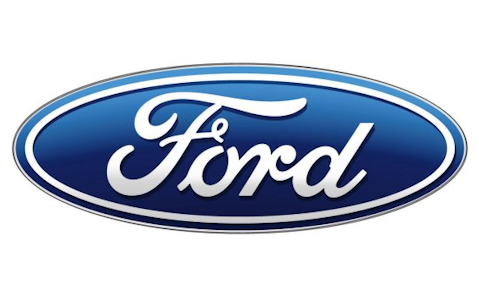On this day in economic and business history…
Two of the Dow Jones Industrial Average (INDEXDJX:.DJI)‘s longest-tenured members celebrate key moments in their history on August 22. While neither company remains a part of the Dow today, both were index components for many decades, and their ascent to index membership can be credited (at least in part) to the events that took place today. Let’s take a deeper look…
The (re)birth of a legend
Did you know that Cadillac, the oldest marquee in General Motors Company (NYSE:GM)‘ stable, was formed out of the wreckage of Henry Ford Motor Company (NYSE:F)‘s early failure? The story is a bit complex. The Henry Ford Company got its start at the end of 1901 after Ford (the man) reorganized his first failed company with the support of new financial backers. However, Ford soon clashed with these backers and was gone by midyear, on his way to starting the company that lives on to this day.

Ford Motor Company (NYSE:F)’s departure left the Henry Ford Company’s investors with assets but no engineering talent, and they were initially determined to sell off the remnants of Ford Motor Company (NYSE:F)’s failure piece by piece. Automotive entrepreneur Henry Leland, fresh off his success as an engine supplier for the Oldsmobile Curved Dash (the first assembly line automobile), was brought in on Aug. 22, 1902 to assess the value of the company’s assets. Leland instead determined that the old Ford Motor Company (NYSE:F) assets could be put to use, as Evan McCausland writes in Automobile magazine:
William Murphy and Lemuel Bowen — both directors of the Henry Ford Company — first approached Leland in August 1902. The men were tasked with liquidating the firm’s assets after Ford Motor Company (NYSE:F)’s departure, and wanted Leland to appraise their value. After surveying the plant, Leland had an idea: he had a leftover engine design, based roughly on the Olds single-cylinder unit (yet unused by Oldsmobile), that boasted impressive power, remarkable reliability, and was cheaper to manufacture. Why not use it as the foundation of a new automobile?
Surprisingly, the directors agreed — and on August 22, 1902, the company was reorganized under the name Cadillac, in honor of Antoine Laumet de La Mothe, Sieure-de-Cadillac, the French explorer who essentially founded what became the city of Detroit. The rest is, as they say, is history: Cadillac’s first car was completed in October, [and] the company was purchased by General Motors Company (NYSE:GM) in 1909.
Six years after acquiring Cadillac, General Motors Company (NYSE:GM) joined the Dow for the first time. McCausland also points out an interesting wrinkle in the Cadillac story: Leland left Cadillac to form Lincoln Motor several years after General Motors Company (NYSE:GM) acquired it, and Lincoln eventually became the luxury marquee of — you guessed it — Ford Motor Company (NYSE:F).
There’s some debate as to whether Cadillac or Buick is the oldest extant auto marquee in the U.S. Buick Motor was not incorporated until 1903, but an earlier engine-maker called Buick Auto-Vim and Power Company got its start in 1899. Either way you slice it, General Motors Company (NYSE:GM) is the parent of the oldest auto marquee in America.
The birth of big steel
The massive Edgar Thomson steel plant roared to life on Aug. 22, 1875 in Pittsburgh, Penn. It was the cornerstone of industrialist Andrew Carnegie’s steel empire, and on its first day the million-dollar plant (its costs would be equal to roughly $25.5 million today) churned out enough liquid steel to produce 2,000 rails for the Pennsylvania Railroad. That year, U.S. steelmakers combined to produce 380,000 tons of steel.
In its first year of operation, the E.T. mill, as it’s popularly known, had produced more than 32,000 tons of steel rail, and it soon increased its capabilities to 225 tons of rail per day, which would equal more than 82,000 tons of steel if the mill operated every day of the year. Carnegie’s early adoption of the Bessemer process helped him dominate the American steel industry, and the E.T. mill was the source of much of his strength.
The E.T. mill still cranks out steel to this day as part of United States Steel Corporation (NYSE:X), which was formed in 1901 by a billion-dollar consortium that had purchased many of the larger steelmaking interests in the U.S. (US Steel became a Dow component almost immediately after its formation, on account of its sheer size.) The mill remains integral to United States Steel Corporation (NYSE:X)’s production, despite its advanced age: E.T.’s two active blast furnaces produced 2.8 million tons of steel at the turn of the century, comprising roughly a quarter of the company’s total production. The E.T. plant and its associated steelmaking complex still account for about 15% of United States Steel Corporation (NYSE:X)’s annual production in North America, which is pretty impressive when you consider that the plant will soon celebrate its 140th birthday.
The article How Ford’s Failure Became GM’s Prestige originally appeared on Fool.com and is written by Alex Planes.
Fool contributor Alex Planes holds no financial position in any company mentioned here. Add him on Google+ or follow him on Twitter @TMFBiggles for more insight into markets, history, and technology.The Motley Fool recommends Ford and General Motors. The Motley Fool owns shares of Ford.
Copyright © 1995 – 2013 The Motley Fool, LLC. All rights reserved. The Motley Fool has a disclosure policy.


